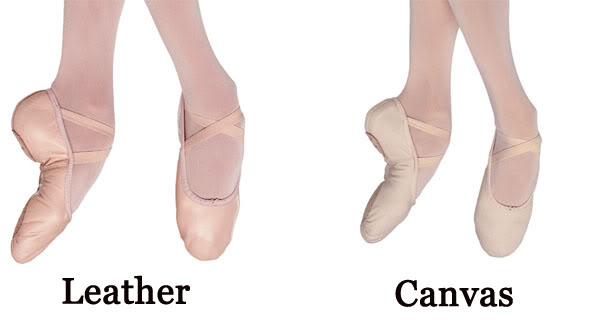Shoes
Shoes are
critical to ballet dancers every day classes, rehearsals, and
performances. The cover and protect the foot, unlike in other
styles of dance where the dancer is barefoot. There are two
types of ballet shoes that a dancer will wear: flat
(demi-pointé) and pointé shoes.
Every ballet student starts with flat
shoes made of either canvas or leather. The shoes allow the
dancer protection from the floor, but also create friction
that gives a dancer control. Friction is very important to
ballet dancers. Friction gives them control to carefully
execute turns as well as traveling jumps.
Home
Shoes
Turns
Jumps
Partnering
References
At some
point in a young girl's training she will make the transition
to dancing én pointé. Dancing in pointé shoes generally takes
a long time to get used to for more than one reason. Pointé
shoes allow the dancer to dance on the very tips of her toes;
consequently the dancer's weight is completely on the standing
foot and toes. Pointé shoes are individually hand constructed
by layering heavy canvas and glue and letting it harden. The
final product must be strong enough to support the weight of a
dancer when she stands on the platform of the shoe. Flat
shoes give a dancer a larger platform to balance on compared
to pointé shoes. Pointé shoes are also covered in a light
satin that has a much lower coefficient of friction than flat
canvas or leather shoes. As a result the normal it takes less
force to overcome the normal force pushing up on the dancer's
feet. Because of that a dancer has to adjust the amount
of force used when stepping on to the shoes and going into
turns. However, many people find it much easier to turn when
on pointé shoes due to the lower friction.
Photo courtesy of
Grishko
Photo courtesy of The
Royal Ballet



